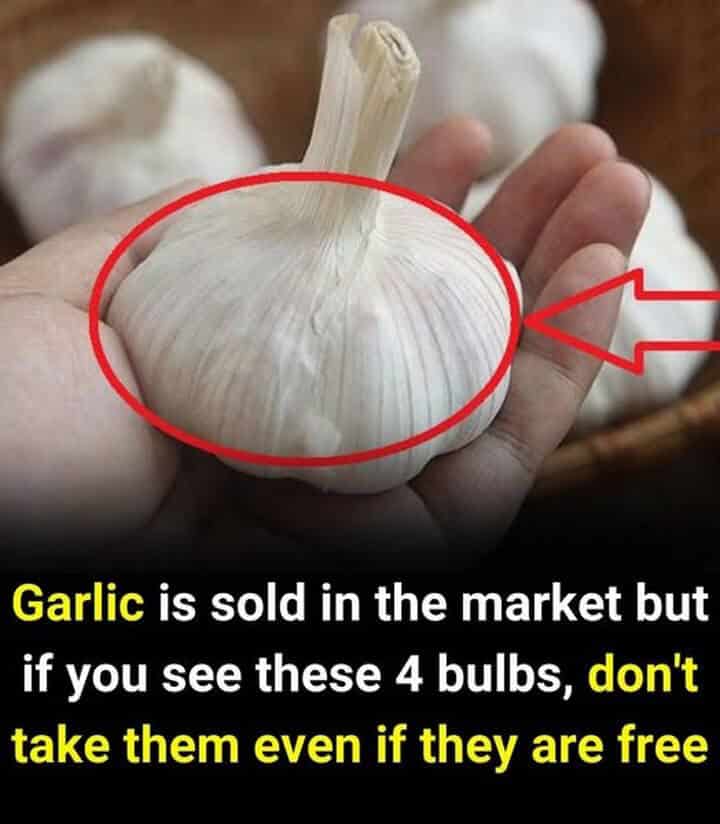Garlic is a kitchen staple that enhances the flavor and nutrition of countless home-cooked meals. It’s rich in vitamins, minerals, and compounds known for supporting immunity and heart health. However, not all garlic is created equal. Choosing the wrong type could lead to disappointing flavor, poor shelf life, or even wasted money. Whether you’re shopping at a supermarket or a local market, being able to identify low-quality garlic is essential for both cooking success and overall health.
1. Cloves That Are Loosely Attached to the Bulb
If you notice that garlic cloves are separating widely from the bulb or that the outer skin has started to peel away, it’s best to pass on it—especially if you’re planning to store it long-term. These garlic bulbs may look plump and easy to peel, but they lack the protective layer that keeps them fresh. Without that barrier, the cloves are exposed to air and moisture, increasing the chances of mold, oxidation, and premature sprouting.
Tip: Look for garlic bulbs that have tightly packed cloves and a firm connection to the central stem. The skin should be dry, thick, and intact. This type of garlic stores longer and maintains its aroma and nutrients better.
2. Mushy or Soft Garlic Cloves
Firmness is a key indicator of freshness when it comes to garlic. Give the bulb a gentle squeeze—if the cloves feel soft, squishy, or hollow, it’s likely spoiled. A garlic bulb that doesn’t feel solid in your hand has already begun to degrade and may harbor mold inside. Even if you’re getting a great deal, buying garlic in bulk when it’s soft is a bad idea.
Tip: Only buy garlic that feels dense and firm. Avoid any that give under pressure, as soft cloves deteriorate quickly and don’t hold up well in storage.
3. Wrinkled or Moist Outer Skin
Garlic with wrinkled or soft skin may not have been properly cured after harvesting. Proper drying is crucial to achieving that crisp, papery skin garlic is known for. When garlic isn’t dried correctly, it retains moisture, dulling its flavor and increasing the risk of mold growth over time. In some cases, wrinkled skin can also indicate the garlic was harvested before reaching maturity, which negatively affects both quality and storage potential.
Tip: If you’ve already purchased garlic with soft skin, allow it to sun-dry for a few days to ensure it loses any lingering moisture. Store it afterward in a breathable container like a mesh bag, and keep it in a dry, well-ventilated spot.
4. Overly White Garlic Bulbs
Garlic bulbs that are very white and uniform in appearance may seem appealing, but they’re often imported varieties—especially from China. While these types are convenient and easy to peel, they usually lack the deep flavor and higher nutrient profile of locally grown options. Purple-skinned garlic, which is common in many local markets, tends to have a more robust aroma and richer taste, making it ideal for home cooking.
Tip: For the best flavor and health benefits, choose garlic with a natural, slightly purple skin. Locally grown varieties usually offer stronger nutritional value and a better cooking experience than imported ones.
Conclusion
Not all garlic is worth bringing home—even if it’s free. Garlic that is soft, loosely packed, wrinkled, or overly white often lacks quality, nutrition, and storage potential. By learning to identify these red flags, you can avoid wasting money and ensure that your meals are packed with flavor and health benefits. Always go for firm, tightly bound, and locally grown garlic with intact skins for the best results in your kitchen.
